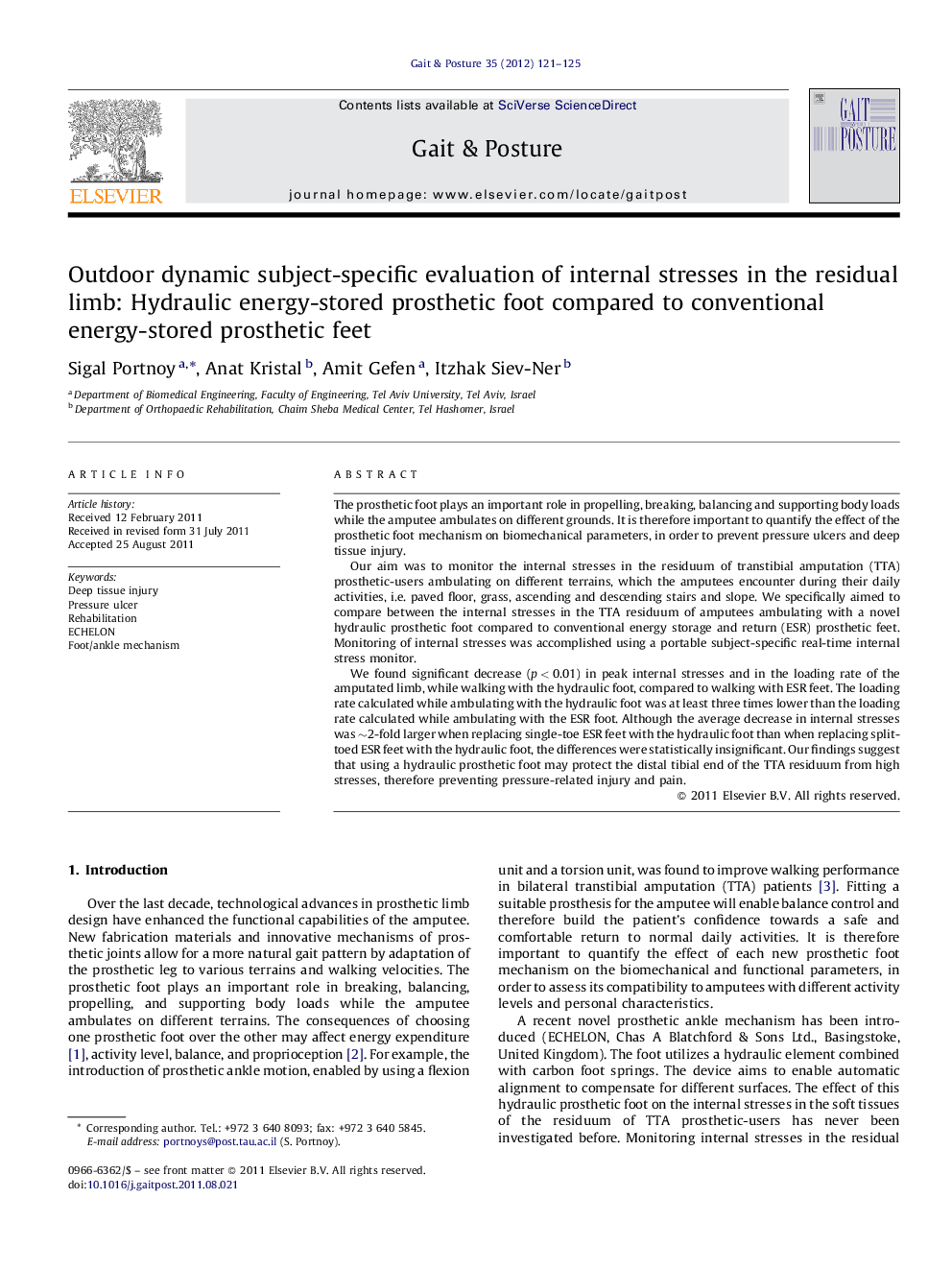| کد مقاله | کد نشریه | سال انتشار | مقاله انگلیسی | نسخه تمام متن |
|---|---|---|---|---|
| 6208217 | 1265680 | 2012 | 5 صفحه PDF | دانلود رایگان |

The prosthetic foot plays an important role in propelling, breaking, balancing and supporting body loads while the amputee ambulates on different grounds. It is therefore important to quantify the effect of the prosthetic foot mechanism on biomechanical parameters, in order to prevent pressure ulcers and deep tissue injury.Our aim was to monitor the internal stresses in the residuum of transtibial amputation (TTA) prosthetic-users ambulating on different terrains, which the amputees encounter during their daily activities, i.e. paved floor, grass, ascending and descending stairs and slope. We specifically aimed to compare between the internal stresses in the TTA residuum of amputees ambulating with a novel hydraulic prosthetic foot compared to conventional energy storage and return (ESR) prosthetic feet. Monitoring of internal stresses was accomplished using a portable subject-specific real-time internal stress monitor.We found significant decrease (p < 0.01) in peak internal stresses and in the loading rate of the amputated limb, while walking with the hydraulic foot, compared to walking with ESR feet. The loading rate calculated while ambulating with the hydraulic foot was at least three times lower than the loading rate calculated while ambulating with the ESR foot. Although the average decrease in internal stresses was â¼2-fold larger when replacing single-toe ESR feet with the hydraulic foot than when replacing split-toed ESR feet with the hydraulic foot, the differences were statistically insignificant. Our findings suggest that using a hydraulic prosthetic foot may protect the distal tibial end of the TTA residuum from high stresses, therefore preventing pressure-related injury and pain.
⺠We calculated internal stresses in the residuum of transtibial amputation patients. ⺠Subjects walked on various terrains with hydraulic or conventional prosthetic feet. ⺠We found a decrease in peak internal stress and loading rate, while walking with the hydraulic foot. ⺠The hydraulic foot may protect the distal tibial end of the residuum from pressure-related injury.
Journal: Gait & Posture - Volume 35, Issue 1, January 2012, Pages 121-125